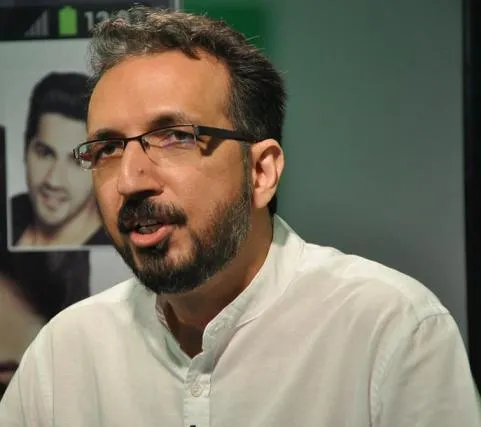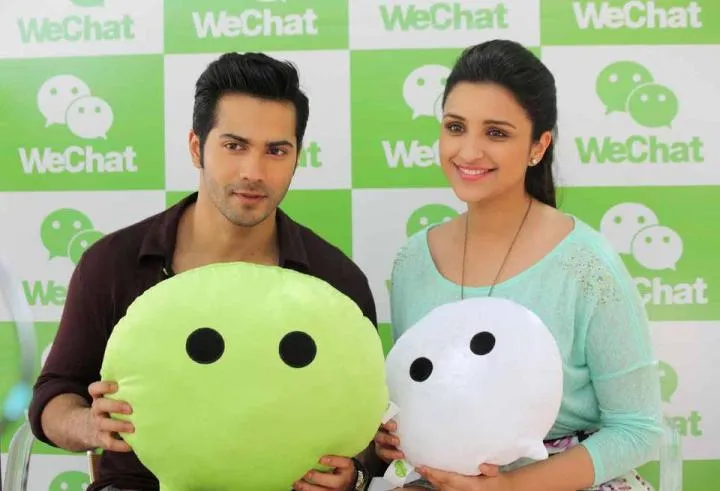How WeChat plans to trump WhatsApp in India?
Last Diwali how did you send messages to your friends and family? SMS, calls, snail mail? Some of you would also have used messaging apps like Whatspp and WeChat. It was around the same time, that Chinese voice messaging service WeChat made an entry into India. Owned by Tencent Holdings and operated by iBibo group in India, WeChat is the recent player tapping the growing affinity to smart phones among Indians.
While the market is still dominated by WhatsApp, WeChat has a good strategy and enough intent up its sleeve to ensure it gives the market leader a stiff competition.
YourStory caught up with Rahul Razdan, Director-10c India Internet Pvt Ltd, the entity that handles WeChat for India to discuss their goto market strategy. Excerpts.
Are you late?
Rahul says the first big initiative of the app when they entered India last Diwali was its broadcast message feature. “We had a broadcast message feature on the platform, using which you could broadcast your Diwali greetings to all your friends in one go. So if you have 300-400 friends, then you genuinely want to wish them, but it is not possible to do so individually. You could use the broadcast messaging facility to do that. The feature was well received by people,” shares Rahul.

New differentiated features are what WeChat is using as the bargaining chip to convince users. They also have animated stickers, voice messaging and group chats. Rahul says they had introduced eight stickers during Diwali and saw about 80% growth in communication on WeChat just during the Diwali period. Another feature that he talks about is an intuitive response that is inbuilt on the platform. So if the conversation is about Diwali, then based on the words animated stickers will appear automatically as a prompt. “Our algorithm picks up cues from the conversation like in the movie ‘Main Hoon Na’, whenever Shah Rukh Khan woos Sushmita Sen music automatically starts playing in the background. It’s our software equivalent of that,” he says.
Apart from product differentiation, Rahul sites the market opportunity in India. “When we started in 2013, our estimate was the market was 30-32 million for smart phone apps users, when we finish the year our estimate is the number will be anywhere between 55-60 million. Therefore, the market growth has been 100%. In 2014, this number will grow from 60 to 120 million. The market is going to grow by 100%. So when I as a communication platform start reaching out to the new set of population even before they start using the platform, they have a reason to remember me. Therefore for this new set of users I am as much a viable player as anybody,” reasons Rahul.
While he is not willing to divulge information about India market share, Rahul says that internationally – outside China – they have crossed 100 million users and that India has a significant share of the number.
Features galore
Rahul says the animated stickers feature is something they are thinking of monetizing through introduction of contextual stickers and stickers of characters. The large Indian population who use smartphones are the primary target for WeChat, and Rahul says their customers would be predominantly youth and people between the age group of 15-35 years.

WeChat’s biggest differentiator is the voice messaging service it offers. So instead of just sending plain typed messages, you now have the option of sending your message in your own voice. “We are product innovators and are very focused on bringing new features that can delight customers,” says Rahul. Voice messaging was introduced in China in 2011, and became an important differentiator to use in mass media. “When we started in India this was one feature that led the communication for us. Interestingly other players in the market also picked it up,” says Rahul.
Animated stickers are the next innovation, which helps bring an element of fun in normal conversations.
Location based services is the third offering. Using this service, a WeChat user can locate his/her friends in a particular vicinity. So say there is a school reunion and you are meeting friends.. Once you reach the location, all you need to do is shake the phone and whoever among your friends have reached the venue will be visible on the list. “All this is just the beginning; we have a long road map. We are in the business of interconnecting people so that they can converse with each other. We will continue to invest to add flavours to conversations,” promises Rahul.
The voice messaging feature will also help them open up a new set of customers, who would like to converse in Indian languages. Voice can easily help overcome the barrier of a language keyboard. Voice messaging is also useful for people who are illiterate. “Exchanging voice messages will help circumvent that problem as well,” says Rahul.
Playing in the Indian market
Hindi film actors Parineeti Chopra and Varun Dhawan have been endorsing WeChat since its launch in the country, and the young pair has managed to bring in the effervescence that the brand wants to portray here. Besides TV, below-the-line activities have been an important component in building the WeChat brand on ground. From mall activations, to stalls in colleges, WeChat has used activation not just to communicate about the brand, but to also get customer feedback. “The objective of activations was not to convert people, but to understand how they are reacting to the features. Is there an immediate feedback to the product, are there challenges they are seeing, are there problems in using the product because of network issues?” explains Rahul about the objective behind user engagement. Customer feedback received in this way was fed back to the product development team to improvise on the product, he says.
India, Rahul admits, is an important market for WeChat and the mandate is to get more and more people on the platform. Being on top of app stores is giving them the required boost, but they will continue to be aggressive with advertising. Given the aggressive advertising WeChat is doing, it is a given that they have a war chest for marketing. There are teams in Mumbai and Gurgoan to handle partner engagements, outreach programmes and associations.
WeChat has drawn the guns for the battle and this strategy can surely give them an advantage in the Indian market, where growth of other messaging apps like WhatsApp and Line have mostly been organic. If it is the new customer that they purely look at, WeChat has an advantage over WhatsApp, but what could be a challenge is how many WhatsApp users switch to WeChat.. But as Rahul pointed out, if the smartphones market continues to grow as predicted, then there is room for everyone to grow.









![[Funding alert] Digital lending platform Revfin raises Rs 100 Cr in debt round](https://images.yourstory.com/cs/2/31ee0510ca7c11eba975c529dced399e/MalvikaCopyofImageTagging52-1647263527421.png)
![[Product Roadmap] How this Shark Tank startup brings analytics, Moneyball, data to kabaddi](https://images.yourstory.com/cs/2/a9efa9c02dd911e9adc52d913c55075e/NewLogoforimagesEditorialTeamMaster-1644336662634.jpeg)
